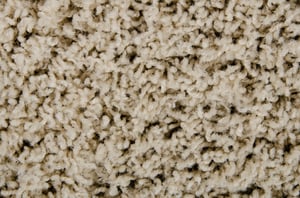Just over two years ago nylon’s share of the carpet fiber market slipped to under 50% for the first time since shortly after nylon was introduced as a carpet fiber. Still, nylon remains the most common carpet fiber sold when residential and commercial are included. Because nylon has had strong sales for many years, it is likely the most common fiber we clean. Solution-dyed nylon is even showing some growth in the commercial sector and carpet tiles. (Note, that if you are looking at the carpet department of big box home improvement stores, or are cleaner mostly newer residential carpet, you are probably cleaning more polyester.)
A representative for Shaw noted that nylon’s durability, the fact that it is available in more colors, its resilience and is well known to consumers as reasons that nylon accounts for the majority of their residential carpet sales. Still, it is clear that nylon’s dominance has slipped away. Nylon may recover market share as the economy improves and consumers become aware of the drawbacks of polyester.

NYLON HISTORY
Dr. Walter Carruthers of DuPont invented nylon in 1935 while searching for a fiber that could replace silk. The original uses included women’s stocking and parachutes. It was first used in carpet in the middle 1950s and grew to the position of most popular carpet fiber by the mid-1960s.
The name nylon was originally a DuPont trademark but has become generic.
Nylon is a polymer which means it is made up of long repeating chains of the same basic molecule. There are actually several varieties of nylon. The ones commonly used as carpet fiber are known as type 6 and type 6,6. As an analogy, think of each unit of the chain as being either a hook or an eyelet on each end. This represents the way the single units connect to form a polymer. Type 6 monomers have a hook on one end and an eye on the other. They join the polymer chain singly to make a group of six while type 6,6 monomers have either a hook on each end or an eye on each end. Type 6, 6 monomers must join in 6 pairs.
Type 6 has a somewhat softer hand or feel than type 6,6. Some feel that type 6 stains easier but also respond to cleaning and stain removal better. Others would argue that the difference is so small as to be of no consequence.
ADVANTAGES
Nylon accepts acid dyes very well. The red in the diagrams above are dye sites or places where a dye can form a bond with the molecule. A process of drawing the filaments during production allows the manufacturer some control over how lightly or heavily dyes will be accepted. Nylon is available in the widest variety of colors and shades. Yarns can easily adapt to changes in demand for popular colors. Solution dyeing is also possible and increasing in popularity especially for commercial carpet and carpet tile. Nylon is very colorfast, but the color from acid dyes can be removed with laundry bleach or strong acids such as some bowl cleaners.
Whether advertised or not, almost all nylon carpet is protected with a fluoroprotector and acid dye resistors. Unless this is worn away and not refreshed, nylon has resistance to water-based staining, as do olefin and polyester, and also resistance to oily spills. Nylon benefits from a protector that refreshes the resistance to staining from acid dyes.
Physical properties of nylon include very good recovery from stretching and excellent resiliency. When fibers are bent or crushed they spring back to the original form.
DISADVANTAGES
When compared to other synthetic fibers, the only disadvantage of nylon is the cost. Currently, the cost of the raw fibers is more $.50+ per pound higher than polyester.
Nylon fibers also weigh more than olefin or polyester fibers, so by weight, a carpet will require more nylon. While that may not seem like a big price difference, it gets multiplied as the carpet goes through manufacturing and distribution. Nylons currently higher cost give polyester and to a lesser extent olefin a big sales advantage.
CLEANING SUGGESTIONS
To prevent damage to acid dye resistors and protect warranties, residential nylon should be cleaned with a prespray of pH 10.0 or less and rinsed with an acidic emulsifier. When heavier soiling levels demand something stronger, use a powdered pre-spray and rinse with the same characteristics as described above.
-Scott Warrinton
